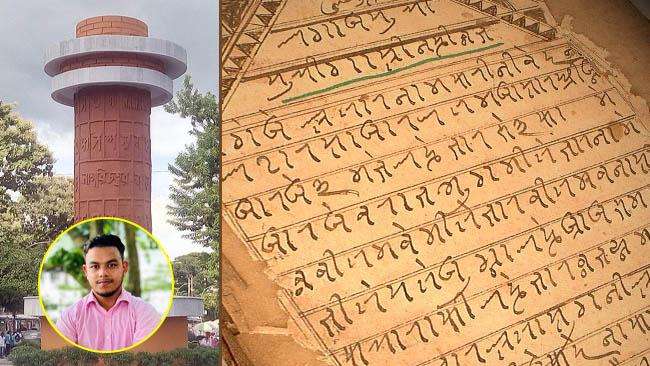Sylhet, rich in history and heritage, boasts the Sylheti Nagri script as one of its proudest distinctions. For a long time, the Sylheti language was sidelined, often dismissed as a dialect or a corrupted form of Bengali. However, recent research has revealed that Sylheti is neither a dialect nor a distorted version of Bengali; it's not even just a spoken regional language! It is an independent, distinct language.
Sylheti possesses all the essential characteristics required for a language to be recognized as independent and distinct. It has its own alphabet, a unique vocabulary, grammatical rules, literary works, and a community of users. In essence, Sylheti fulfills all the criteria of an independent language.
Unfortunately, in recent times, the influence of Bengali, English, Hindi-Urdu, and even Persian-Portuguese has led to the disappearance of many authentic Sylheti words. Modern, "civilized" Sylhetis living in urban areas often look down upon the use of these words. Consequently, genuinely Sylheti words are rarely heard today. This has led many to unhesitatingly consider Sylheti a dialect of Bengali.
This understanding is likely what prompted the popular Bengali novelist Pramatha Chowdhury to make his famous statement: "The Bengali language has been wounded in Sylhet and killed in Chittagong." This remark was evidently made from the perspective of Sylheti being a dialect of Bengali.
The most significant blow to the Sylheti language has been in the realm of its script. Introduced in the 15th century, this script, known as Sylheti Nagri Lipi, gained immense popularity not only in Sylhet, Bangladesh, but also among the Sylheti communities in India's Barak Valley, Tripura, Manipur, Meghalaya, and Nagaland. Within Bangladesh, its use rapidly spread beyond Sylhet to regions like Mymensingh. Historically, a major application of this script was in the composition of poetic manuscripts called puthi. To this day, puthi written in Sylheti Nagri Lipi can be found in homes of Sylheti people in Sylhet, Assam, and Tripura.
Over time, for various reasons, this script began to fade. The final blow came around the 1970s when the Sylheti Nagri printing presses in Sylhet city were dismantled. This severely hampered the publication of Nagri texts, leading to its near-permanent disappearance from the region.
Consequently, for the current generation of Sylheti-descended citizens, it remains largely an unknown script. A significant portion of the Sylheti community is still unaware of this glorious aspect of their heritage. This stands in stark contrast to other linguistic groups in the country who lament the absence of their own distinct scripts.
However, the gradually disappearing Sylheti Nagri Lipi has recently seen a glimmer of hope. Over the past two decades, a group of researchers from the Sylheti diaspora in London has begun new research into it. Simultaneously, efforts to preserve, research, and document the history and heritage of this script have also commenced in Sylhet, Bangladesh, and in Assam, Manipur, Tripura, Nagaland, and Meghalaya in India. Many individuals and organizations are actively involved in its preservation through wall writings, publishing books and magazines, and distributing leaflets.
Notably, following the post-July 2024 movement, Sylheti Nagri Lipi even found its place on several walls in Sylhet and Moulvibazar. This can be described as a renaissance for Sylheti Nagri Lipi. The Sylheti community is progressively joining this revival, practicing the script, and playing a crucial role in its preservation. It is hoped that if this trend continues, this endangered yet glorious script can be saved from complete extinction.
It's worth noting that the Unicode for Sylheti Nagri Lipi was released in the 2000s. Subsequently, in 2014, the script was experimentally launched in Wikipedia's Incubator. After further validation in February 2025, it was made publicly available. Currently, you can read or edit Wikipedia pages in Sylheti. To date, over 1,000 articles have been written in Sylheti Nagri Lipi on Wikipedia, and this number is continuously growing.
Therefore, an appeal goes out to the Sylheti communities across the globe: come forward to preserve the Sylheti script while there's still time. Introduce the next generation to this glorious script and play a role in securing its national and international recognition.
---
Author: Ruman Ahmed, Student of Sylhet International University



_2.jpg)
_3.jpg)



.svg)
